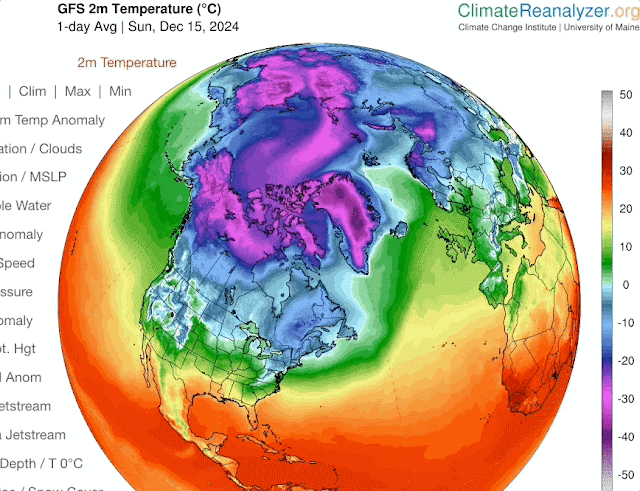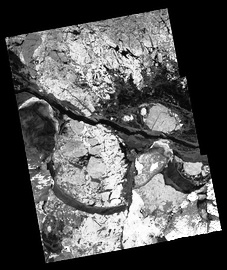~The importance of an accurate Ancient Chronology helps explain climate induced historical events, some spanning for decades. For instance, incredible monuments like the Giza Pyramids were not built during massive droughts, of which devastating famines following their construction caused a lost of technological prowess which built them in the first place. Or for instance, the rise of Egyptian 18th Dynasty New Kingdom which started by expelling the Hyksos, the latter likely weakened by another disastrous drought period. Following of which in the middle of the 18th, Pharaoh Hatshepsut temple was built during an era of normalcy giving prosperity, sustaining an Ancient Egyptian renaissance period re-establishing the building of magnificent monuments and structures.
~Today's Anthropogenic enhanced climate change is much compensated by modern technology, but the limits of this techno driven world are already being tested, in the form of civil strife and mass migration. Given that much of the world's population are living day by day, at the razor edge of survival, a prolonged climate event, such caused from AECC, makes for great motivation to leave a day by day razor's edge existence to desperately migrate to the countries who fare better despite extreme weather events.
~History is full of pre industrial climate disasters, even though they didn't last very long (decades to 100 years or so). None more salient than the 12th century collapse of the Bronze age Mediterranean civilizations, or the greatest example of our ancient past, the collapse of Ancient Egypt Old Kingdom.
~ Being so fitting we start with 4 optically aligned years, all ancient Egyptian.
~All can be refined given better data, note most data is taken from what is available online, Google Earth can regionally be accurate if proven so. Far better on site research with the highest precision GPS instruments can ultimately lead to more solid dating.
NOTE : these dates are tentatively close, some will likely change. They are presented in order of discovery
KMT 1
2370 BC ........ A KMT 1, Ancient Kemet/Egyptian 1, start of construction year of the Great Pyramid, Pharaoh Khufu coronation 2340 BC, followed by coronations of Djedefre, Kefren and Menkaure between 2340 and 2302 BC, in the Queens chamber of the Great Pyramid.
Astronomical prowess of Ancient Egyptians need not to be reintroduced, the very orientation of the Giza pyramids is self explanatory. But these pyramids reflect a stronger adherence to the upwards sky absent of refraction, except for the Sphinx gaze to the horizon, which has a strong refraction component, making it not as stable with respect to precision, perfection. The Great Pyramid was based on the transit equivalency of Sopdet/Sirius and RA/Sun occurring 30 days before the winter solstice (in 2370 BC). Khufu Ahket, the name of the great Pyramid as written then, meaning the horizon of Khufu, has a relation to the horizon only with respect to the sunrise at the equinox.
KMT 2
1313 BC Amenhotep IV, Akhenaten Coronation year. Akhenaten tried to re-establish the solar RA dominance in governance, replacing Amun as the God of Gods and placing RE or the Aten as the God which can be always felt and seen.
There are several corroborating monuments and historical findings which tend to agree with 1313. Namely the alignment of the Great Aten Temple at Akhetaten or Tel el Amarna. Two boundary stelae proclaiming in a very clever secret way the date of Akhenaten coronation, a new hieroglyph inspired by a blue refracted hourglass sunrise, only possible at higher elevation horizon as found at Akhetaten/Amarna [involving heavy refraction science ]. The dendrochronology dating of the Uluburun shipwreck dedicated firewood for cooking, 1305 BC, also found on the wreck; a gold scarab of the great wife of Akhenaten, Nefer Neferu Aten, or Nefertiti, not co-ruling yet.
Clean air blue sunset or sunrise upon a higher horizon.
KMT 3
3422 BC. Pharaoh 0, the first Pharaoh was crowned when the winter solstice transit sun was at the same altitude as Sirius at transit. From this time onwards, Sirius/Sun Transit equivalence drifted earlier in the year away from the winter solstice, this is the proto genesis of all Pharaohs of especially the Old Kingdom mainly upwards look at the sky. This was a quasi refraction free high precision moment in time.
KMT 4
1427 BC +/- 20 years based on 116.767 degrees Azimuth dot sunrise Hatshepsut temple at Waset/Luxor/ Deir el Bahri, aligned with the winter solstice sunrise, designed by her vizier architect and astronomer Senenmut.
Caution must be taken with Google Earth accuracy, therefore the large +/- variance in dating. Some GE regions of the world may be well off, some others like at Luxor apparently not. This can be much improved by high precision in situ GPS equipment.
A paper: " Studying the Orientations of Luxor Ancient Egyptian
Temples Using QuickBird Images"
By Mosalam Shaltout and Ahmed Ibrahim Ramzi
1. NRIAG (National Research Institute of Astronomy and Geophysics), Cairo 11421, Egypt
2. NARSS (National Authority for Remote Sensing and Space Sciences), Cairo11421, Egypt "
Gives a bearing of 116 degrees 48′34.44". 116.746 degrees Azimuth. While using Google Images GEO Eye-1.
The sunrise dot as seen from Luxor Eastern then pristine mainly pollution free hill scape can be less than 8 arc seconds in width. While using Laskar latest declination formula, and considering a near constant refraction value from higher elevation horizons, as derived from local Upper Air archives. The winter or summer sunrise solstice is likely the easiest horizon high precision astronomical bearing (if not the only one) which can be found within a few years of observations. In Ancient Egypt, this certainly became an understanding which prompted a shift in building philosophy which in its past was particularly designed to avoid refraction effects, from the Great Pyramids, inspired by well above the horizon gaze, to the Middle and New Kingdom temples of the Nile Valley, being mostly sunrise dedications having the same astronomical alignment accuracy as the pyramids, achieved without expending far greater resources. Hatshepsut temple was likely aligned with the predynastic concept of the original pharaohs being Gods, ie pharaoh 0, since Hatshepsut claimed her father being a God. Hatshepsut coronation/dedication had exactly the same sun shaft as with the Great Pyramid Queen's chamber. except it was much miniaturized in length but aimed at the horizon like the Sphinx. And she was known to have made built a lot of sphinxes.

An 8 Arc seconds wide sunset, it can be just as much a sunrise dot. These are easily seen by normal eyesight alone. The perfect positioning with respect to Hatshepsut Temple needs a flat leveled field, such as found in front her temple. Then by means of thin rods, suspended plums or even stones, a repeat alignment of the furtherest South winter solstice sunrise may be replicated on a few occasions, identifying the true solstice bearing. During such alignments, a small shaft as found at the temple, may be built with the comprising solstice sunrise dot at the center lower shaft bottom, this permits subsequent years whole sun to penetrate the inner sanctum starting center left if the air is heavily refracted, or drifting from center to the right after normal average refraction sunrise. Thus a small wall with square shaft may be built first before the entire temple structure is built around it.
More to come Looking for historian or Egyptologist to co-write for peer reviewing please reply your interest here in the comment option by saying hi, will see your email thereafter.
wd May 19,21,, 2024





























